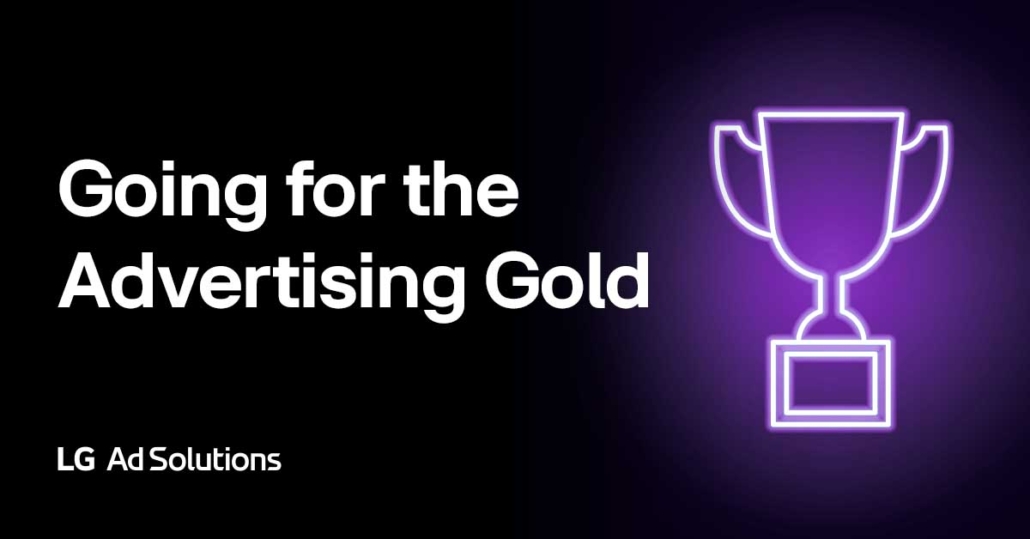 https://lgads.tv/wp-content/uploads/2024/07/LG_Ads_AdvertisingGold_Blog_1200x628.jpg
628
1200
LG Ads Solutions
https://lgads.tv/wp-content/uploads/2022/11/lg-ad-solution-allblack-1.png
LG Ads Solutions2024-07-24 03:00:552024-07-22 08:56:26Going for the Advertising Gold
https://lgads.tv/wp-content/uploads/2024/07/LG_Ads_AdvertisingGold_Blog_1200x628.jpg
628
1200
LG Ads Solutions
https://lgads.tv/wp-content/uploads/2022/11/lg-ad-solution-allblack-1.png
LG Ads Solutions2024-07-24 03:00:552024-07-22 08:56:26Going for the Advertising Gold https://lgads.tv/wp-content/uploads/2024/07/LG_Ads_AdvertisingGold_Blog_1200x628.jpg
628
1200
LG Ads Solutions
https://lgads.tv/wp-content/uploads/2022/11/lg-ad-solution-allblack-1.png
LG Ads Solutions2024-07-24 03:00:552024-07-22 08:56:26Going for the Advertising Gold
https://lgads.tv/wp-content/uploads/2024/07/LG_Ads_AdvertisingGold_Blog_1200x628.jpg
628
1200
LG Ads Solutions
https://lgads.tv/wp-content/uploads/2022/11/lg-ad-solution-allblack-1.png
LG Ads Solutions2024-07-24 03:00:552024-07-22 08:56:26Going for the Advertising Gold https://lgads.tv/wp-content/uploads/2024/06/LG_Ads_HotDog_Blog_1200x628_1.jpg
628
1200
LG Ads Solutions
https://lgads.tv/wp-content/uploads/2022/11/lg-ad-solution-allblack-1.png
LG Ads Solutions2024-07-01 06:00:122024-07-02 09:17:49Hot Dog-based Advertising Lessons
https://lgads.tv/wp-content/uploads/2024/06/LG_Ads_HotDog_Blog_1200x628_1.jpg
628
1200
LG Ads Solutions
https://lgads.tv/wp-content/uploads/2022/11/lg-ad-solution-allblack-1.png
LG Ads Solutions2024-07-01 06:00:122024-07-02 09:17:49Hot Dog-based Advertising Lessons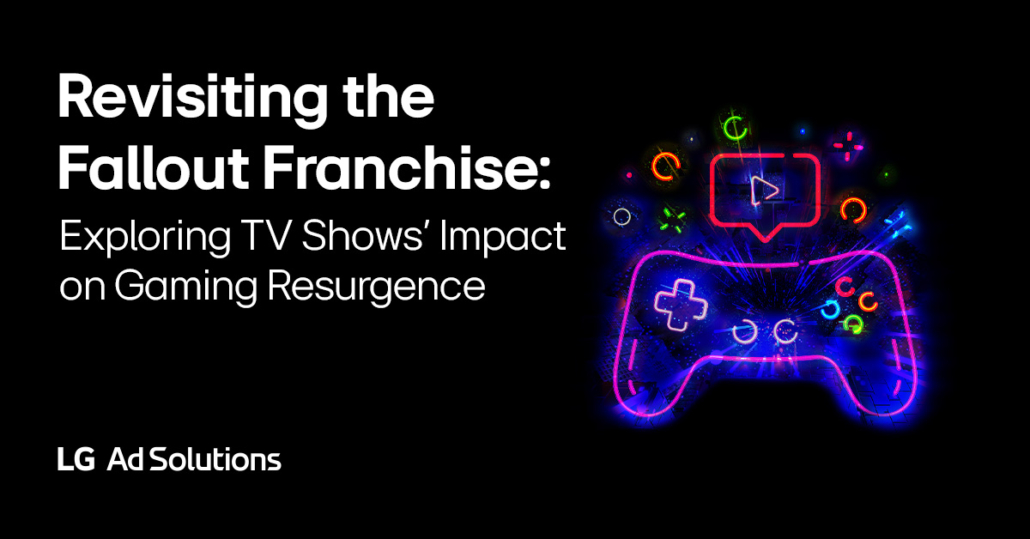
Revisiting the Fallout Franchise: Exploring TV Shows’ Impact on Gaming Resurgence
Entertainment, TV Measurement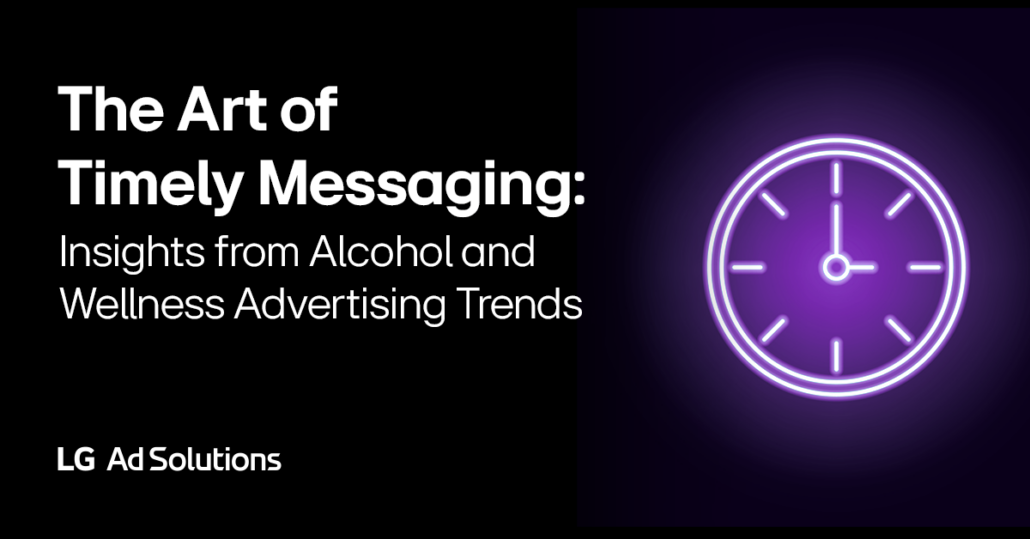
The Art of Timely Messaging: Insights from Alcohol and Wellness Advertising Trends
TV Measurement, Uncategorized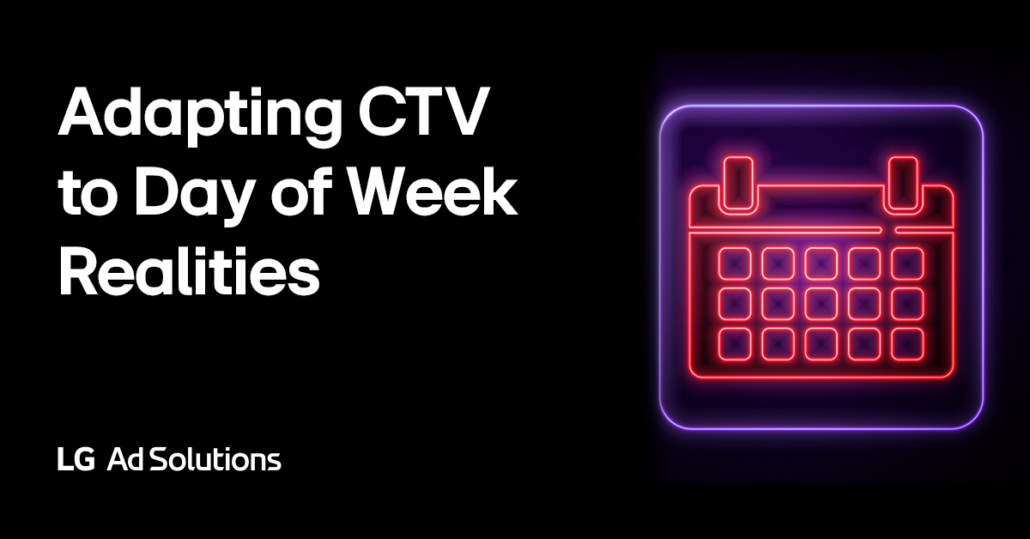 https://lgads.tv/wp-content/uploads/2024/04/LG_Ads_DayoftheWeek_Blog_1200x628.png
628
1200
LG Ads Solutions
https://lgads.tv/wp-content/uploads/2022/11/lg-ad-solution-allblack-1.png
LG Ads Solutions2024-05-08 13:14:512024-05-30 09:31:06Adapting CTV to Day of Week Realities
https://lgads.tv/wp-content/uploads/2024/04/LG_Ads_DayoftheWeek_Blog_1200x628.png
628
1200
LG Ads Solutions
https://lgads.tv/wp-content/uploads/2022/11/lg-ad-solution-allblack-1.png
LG Ads Solutions2024-05-08 13:14:512024-05-30 09:31:06Adapting CTV to Day of Week Realities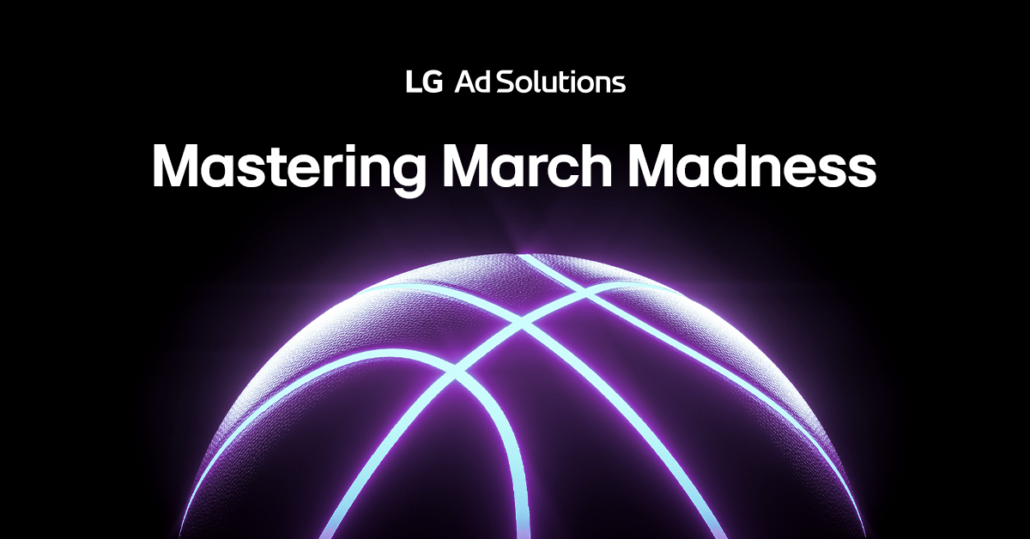 https://lgads.tv/wp-content/uploads/2024/03/LG-Ads_MarchMadness_BlogHero_1200x628_V2.png
628
1200
LG Ads Solutions
https://lgads.tv/wp-content/uploads/2022/11/lg-ad-solution-allblack-1.png
LG Ads Solutions2024-03-20 08:00:172024-05-30 09:31:06Mastering the (March) Madness: Lessons for Advertisers
https://lgads.tv/wp-content/uploads/2024/03/LG-Ads_MarchMadness_BlogHero_1200x628_V2.png
628
1200
LG Ads Solutions
https://lgads.tv/wp-content/uploads/2022/11/lg-ad-solution-allblack-1.png
LG Ads Solutions2024-03-20 08:00:172024-05-30 09:31:06Mastering the (March) Madness: Lessons for Advertisers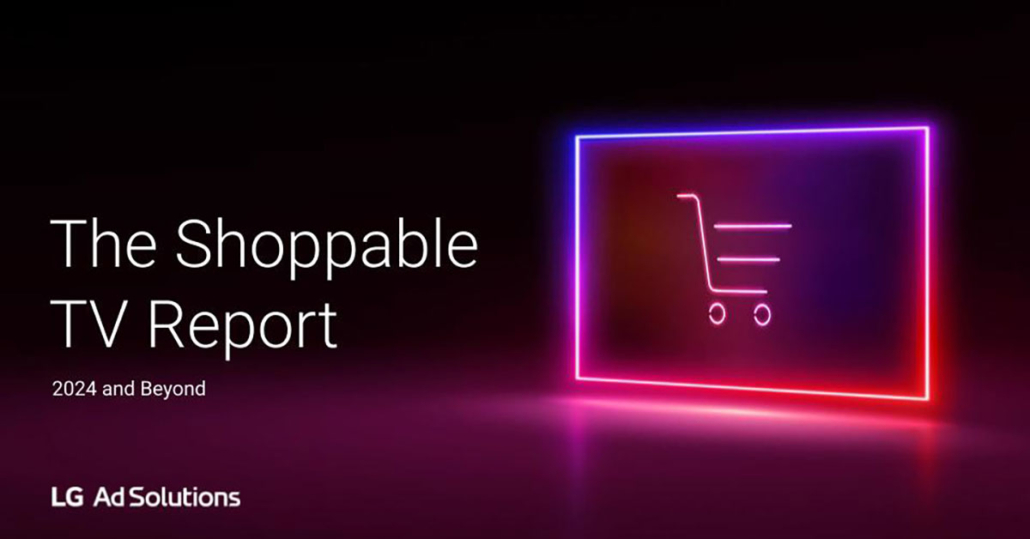
The Shoppable TV Report: 2024 and Beyond
Connected TV Trends, TV Audience Analysis, TV Measurement, TV Technology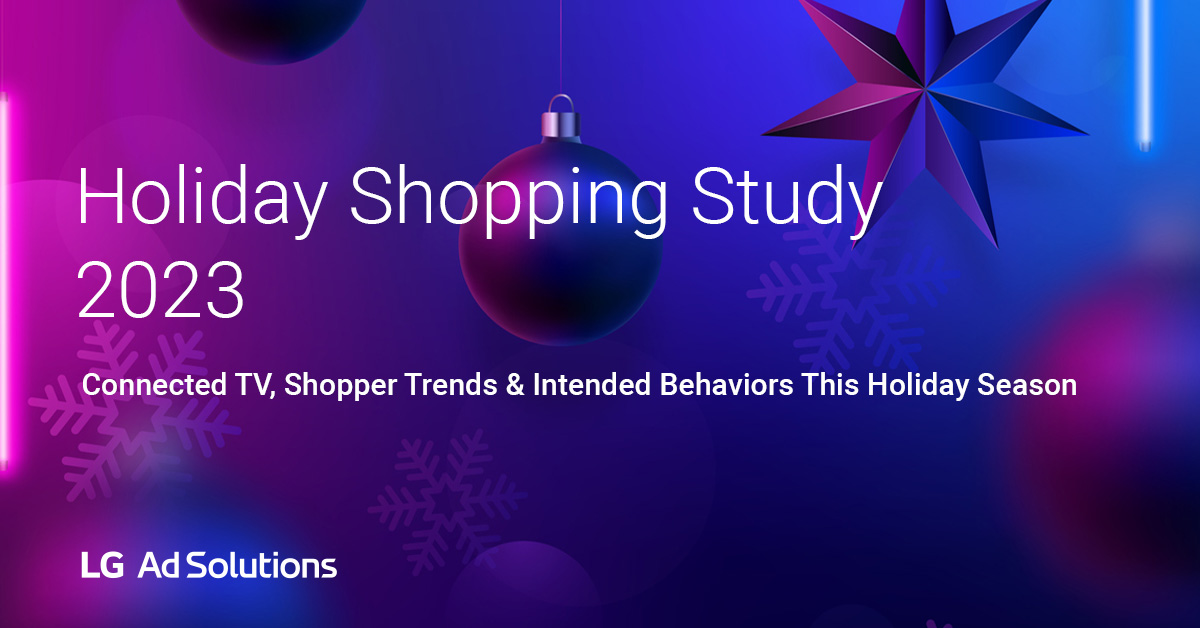
Holiday Shopping Study 2023: Connected TV, Shopper Trends, & Intended Behaviors This Holiday Season
Connected TV Trends, Linear TV, TV Advertising News, TV Audience Analysis, TV Measurement, TV Technology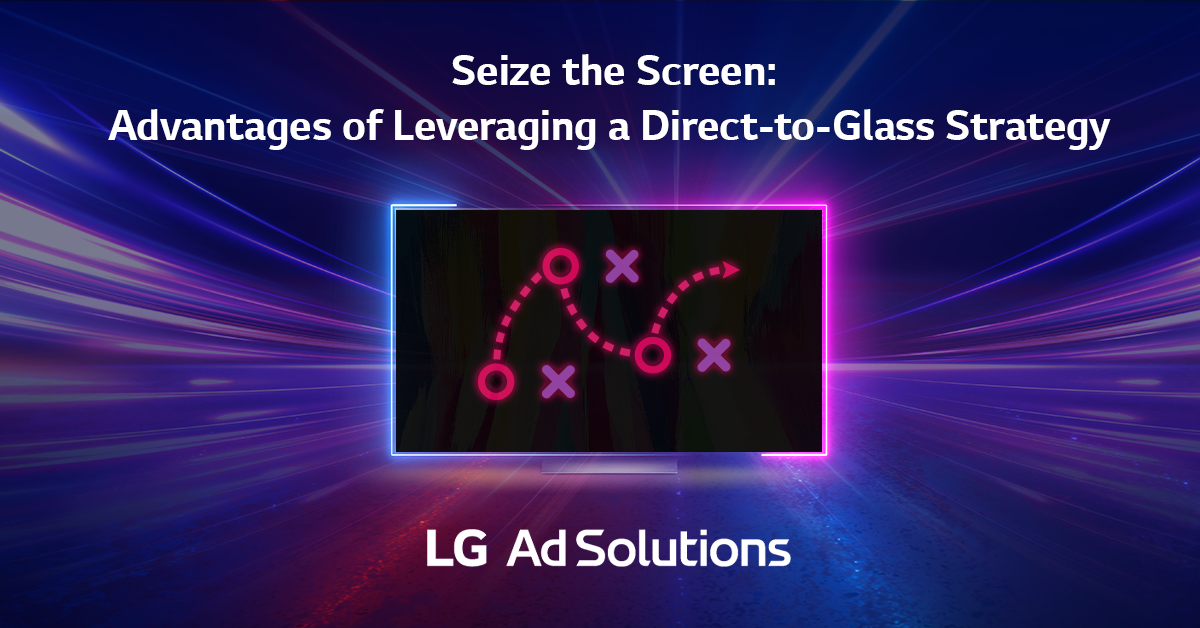
Seize the Screen: Advantages of Leveraging a Direct-To-Glass Strategy
Connected TV Trends, TV Advertising News, TV Audience Analysis, TV Measurement, TV Technology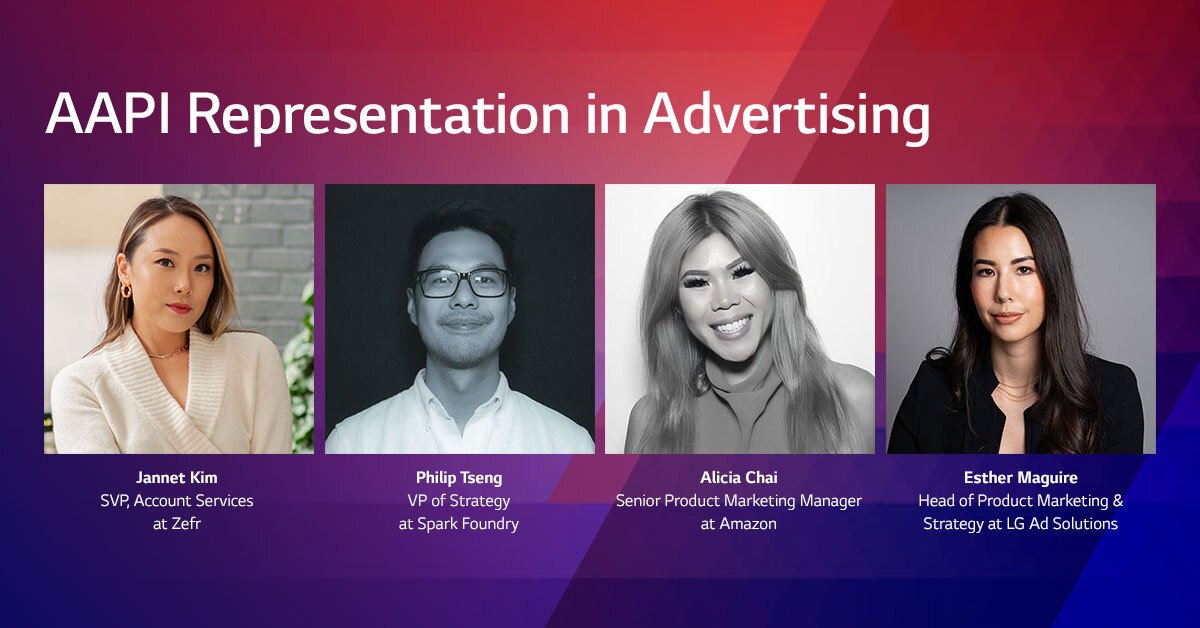
From the Experts: Bridging the Gap between Asian American Consumers and Representation in Media
Connected TV Trends, Linear TV, TV Advertising News, TV Audience Analysis, TV Measurement, TV Technology, Webinar https://lgads.tv/wp-content/uploads/2023/05/gaming.jpg
628
1200
LG Ads Solutions
https://lgads.tv/wp-content/uploads/2022/11/lg-ad-solution-allblack-1.png
LG Ads Solutions2023-05-30 00:06:002024-05-30 09:31:06Power Gamers and The Tears of the Kingdom
https://lgads.tv/wp-content/uploads/2023/05/gaming.jpg
628
1200
LG Ads Solutions
https://lgads.tv/wp-content/uploads/2022/11/lg-ad-solution-allblack-1.png
LG Ads Solutions2023-05-30 00:06:002024-05-30 09:31:06Power Gamers and The Tears of the Kingdom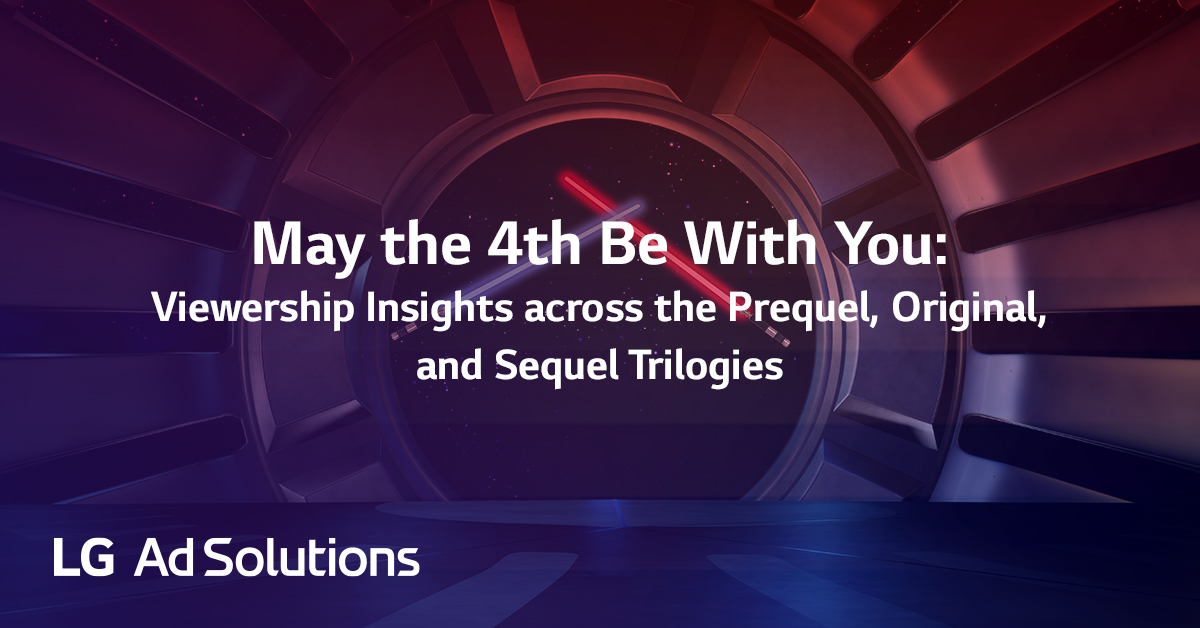
May the 4th Be With You: Viewership Insights across the Prequel, Original, and Sequel Trilogies
Connected TV Trends, Linear TV, TV Advertising News, TV Audience Analysis, TV Measurement, TV Technology, Webinar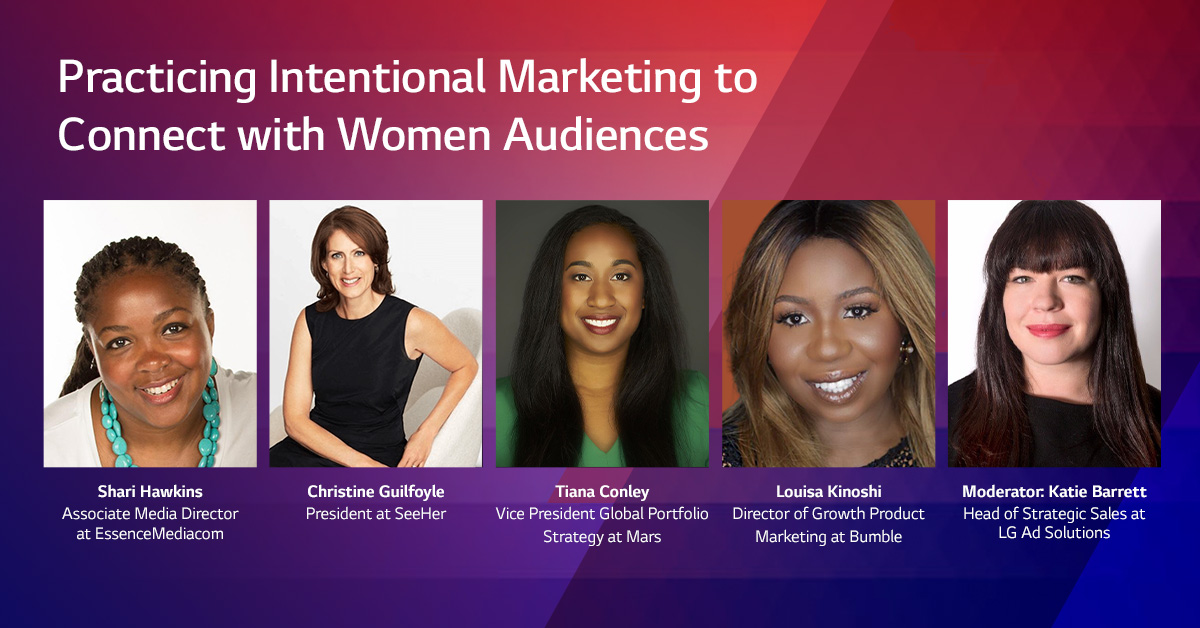
From the Experts: Why Investing in Women Audiences is Good for Business
Connected TV Trends, Linear TV, TV Advertising News, TV Audience Analysis, TV Measurement, TV Technology, Webinar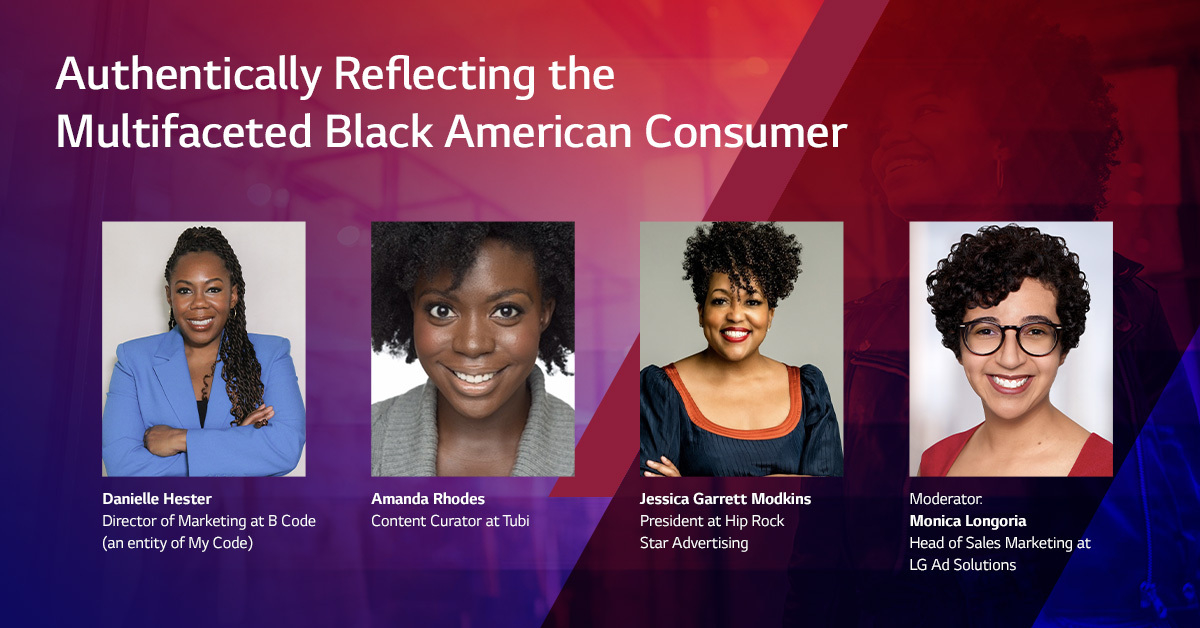
From the Experts: Cultivating Deeper Brand Relationships with Black Consumers for Mutual Success
Connected TV Trends, Linear TV, TV Advertising News, TV Audience Analysis, TV Measurement, TV Technology, Webinar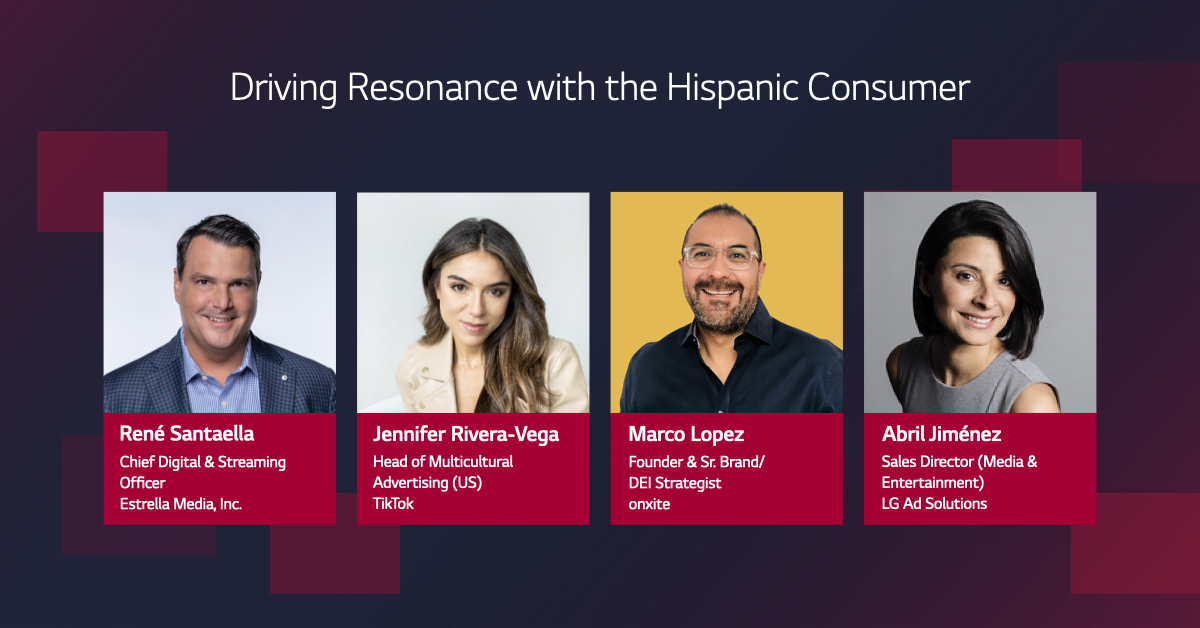
From The Experts: Tap Into the Hispanic Audience Segment with These Three Strategies
Connected TV Trends, Linear TV, TV Advertising News, TV Audience Analysis, TV Measurement, TV Technology, Webinar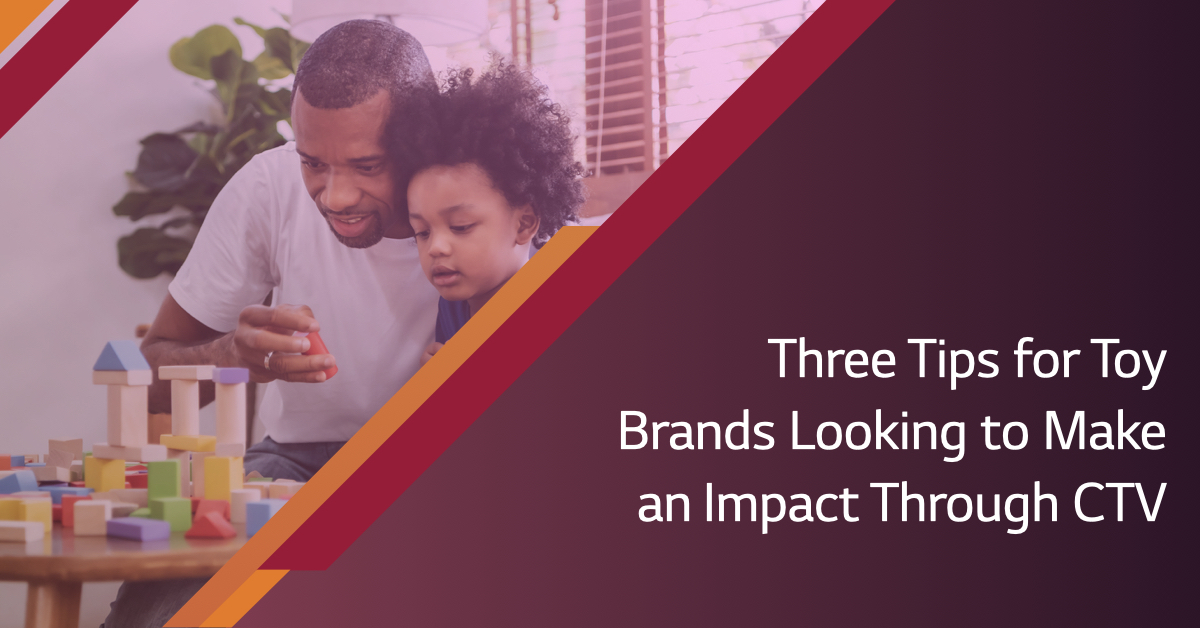
Three Tips for Toy Brands Looking to Make an Impact Through CTV
Connected TV Trends, Linear TV, TV Advertising News, TV Audience Analysis, TV Measurement, TV Technology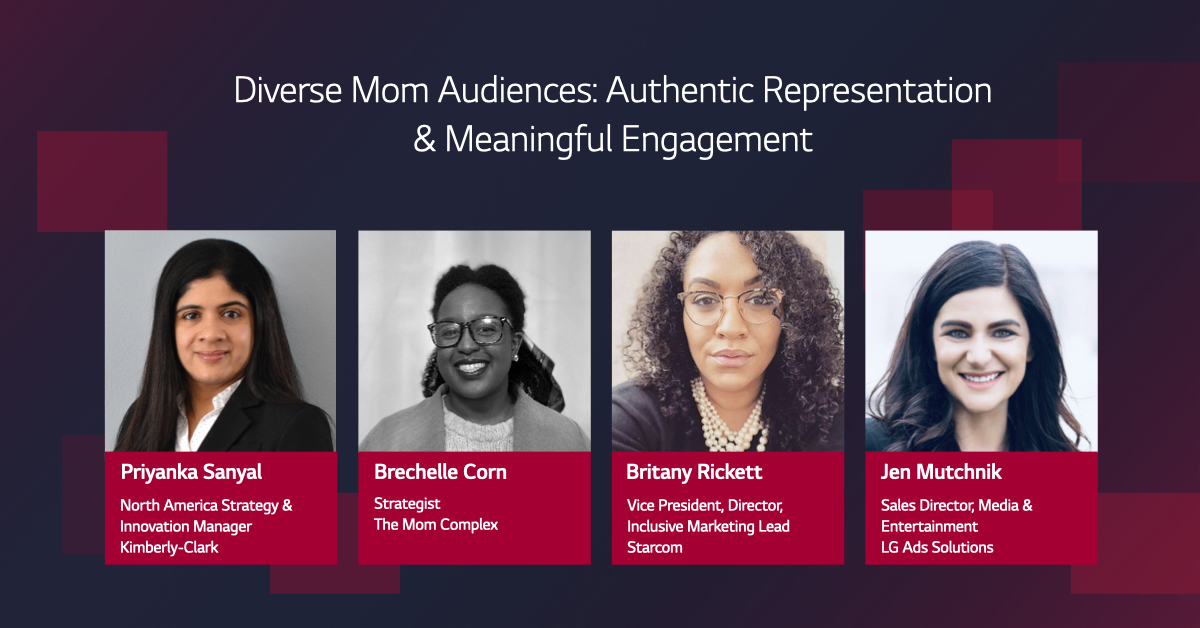
From The Experts: Three Key Strategies for Engaging with Diverse Mom Audiences through Media
Connected TV Trends, Linear TV, TV Advertising News, TV Audience Analysis, TV Measurement, TV Technology, Webinar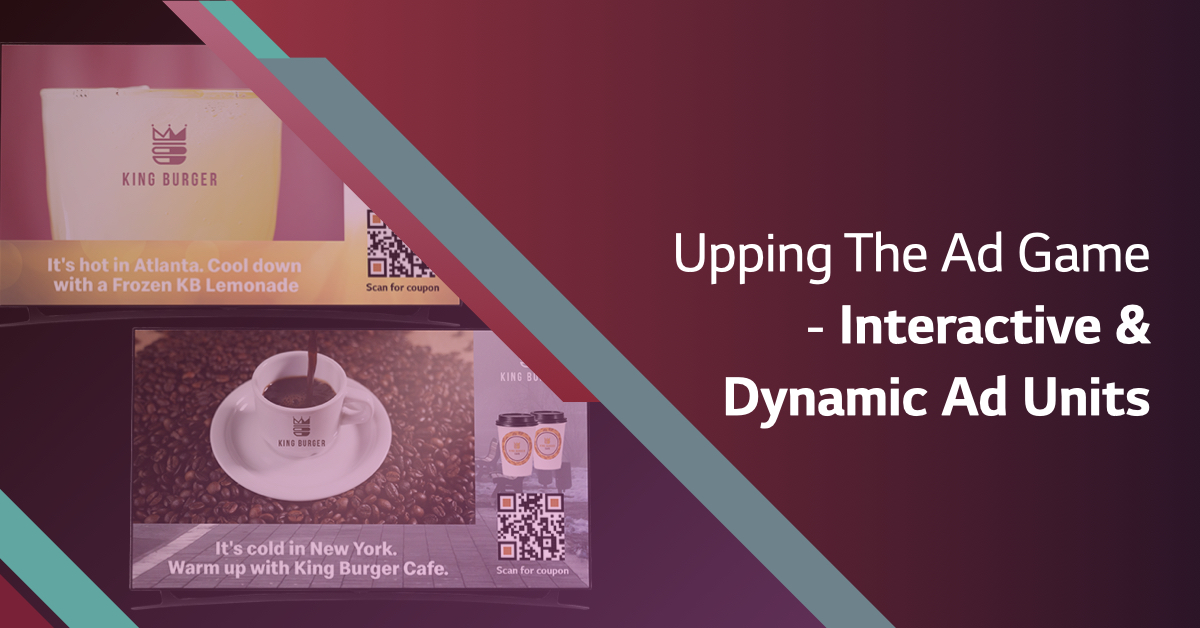
Upping The Ad Game — Interactive & Dynamic Ad Units
Connected TV Trends, Linear TV, TV Advertising News, TV Audience Analysis, TV Measurement, TV Technology
TV Trends — Ready Your Stance, Take Your Shot: Tennis & Golf
Connected TV Trends, Linear TV, TV Advertising News, TV Audience Analysis, TV Measurement, TV Technology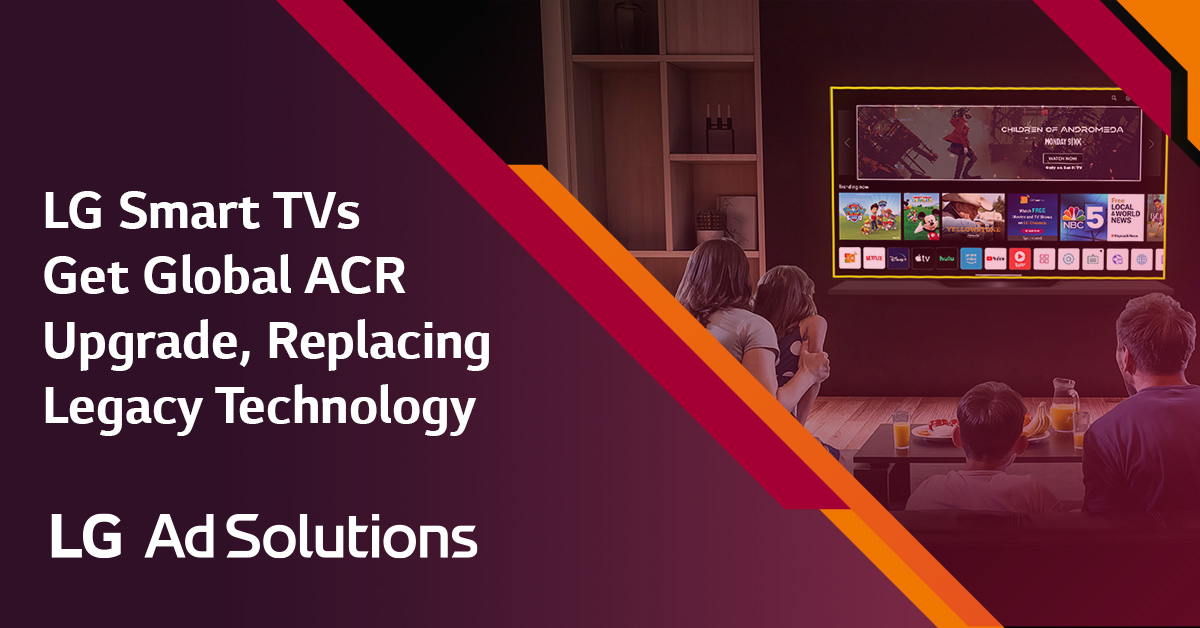
LG Smart TVs Get Global ACR Upgrade, Replacing Legacy Samba TV Technology
Connected TV Trends, Linear TV, TV Advertising News, TV Audience Analysis, TV Measurement, TV Technology, Webinar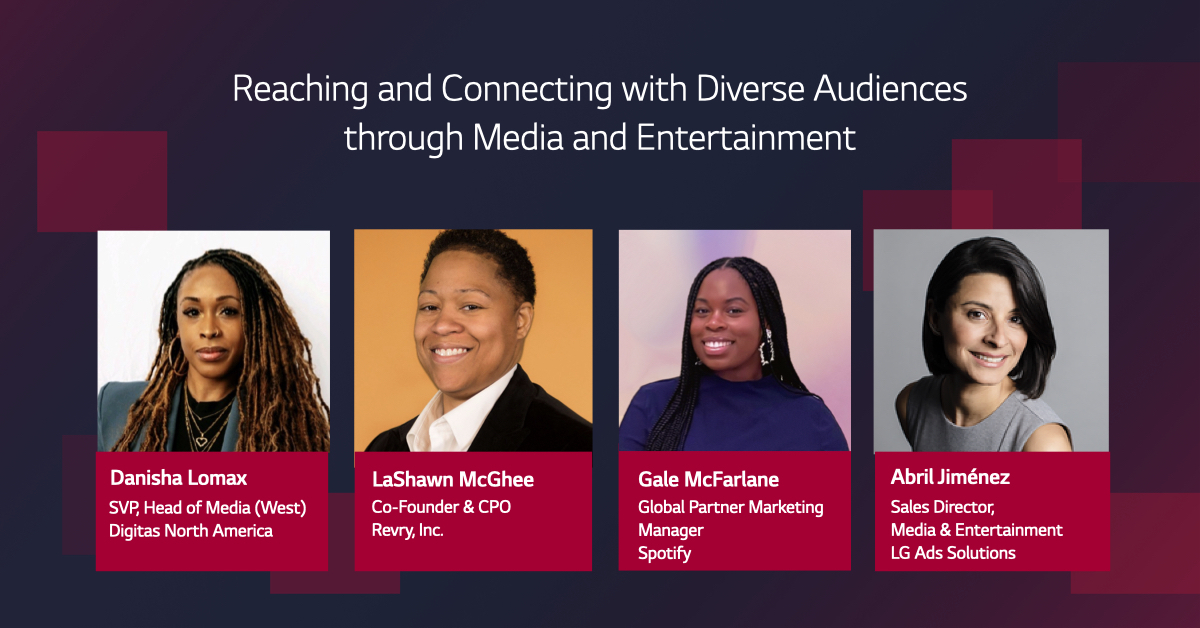
From The Experts: 3 Tips To Authentically Portray Diverse Audiences In Media & Entertainment
Connected TV Trends, Linear TV, TV Advertising News, TV Audience Analysis, TV Measurement, TV Technology, Webinar
TV Trends — Hit a Home Run with MLB Audiences
Connected TV Trends, Linear TV, TV Advertising News, TV Audience Analysis, TV Measurement, TV Technology
TV Trends — Create A Slam Dunk Strategy To Reach NBA Audiences
Connected TV Trends, Linear TV, TV Advertising News, TV Audience Analysis, TV Measurement, TV Technology
FASTs Are The Next Big Thing For TV Viewers
Connected TV Trends, Linear TV, TV Advertising News, TV Audience Analysis, TV Measurement, TV Technology
TV Trends — First Down: Football
Connected TV Trends, Linear TV, TV Advertising News, TV Audience Analysis, TV Measurement, TV Technology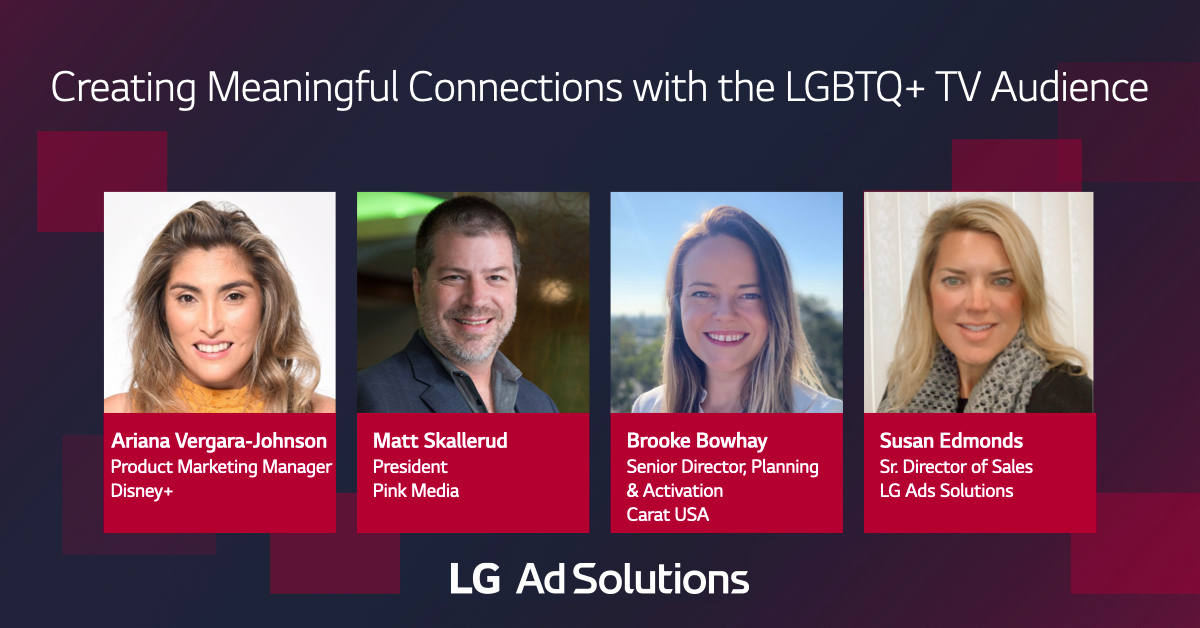
From The Experts: 3 Things to Remember While Building Relationships with LGBTQ+ TV Audiences
Connected TV Trends, Linear TV, TV Advertising News, TV Audience Analysis, TV Measurement, TV Technology
TV Trends — Efficiently Identifying and Reaching Sports Fans
Connected TV Trends, Linear TV, TV Advertising News, TV Audience Analysis, TV Measurement, TV Technology
Overcoming the Pitfalls of Walled Gardens in the CTV Industry
Connected TV Trends, Linear TV, TV Advertising News, TV Audience Analysis, TV Measurement, TV Technology https://lgads.tv/wp-content/uploads/2022/06/Lgads-ThinkLA-Award-winner2.jpg
628
1200
LG Ads Solutions
https://lgads.tv/wp-content/uploads/2022/11/lg-ad-solution-allblack-1.png
LG Ads Solutions2022-06-15 18:50:582022-12-30 10:43:43LG Ad Solutions Bags Two Awards at the ThinkLA IDEA Awards 2022
https://lgads.tv/wp-content/uploads/2022/06/Lgads-ThinkLA-Award-winner2.jpg
628
1200
LG Ads Solutions
https://lgads.tv/wp-content/uploads/2022/11/lg-ad-solution-allblack-1.png
LG Ads Solutions2022-06-15 18:50:582022-12-30 10:43:43LG Ad Solutions Bags Two Awards at the ThinkLA IDEA Awards 2022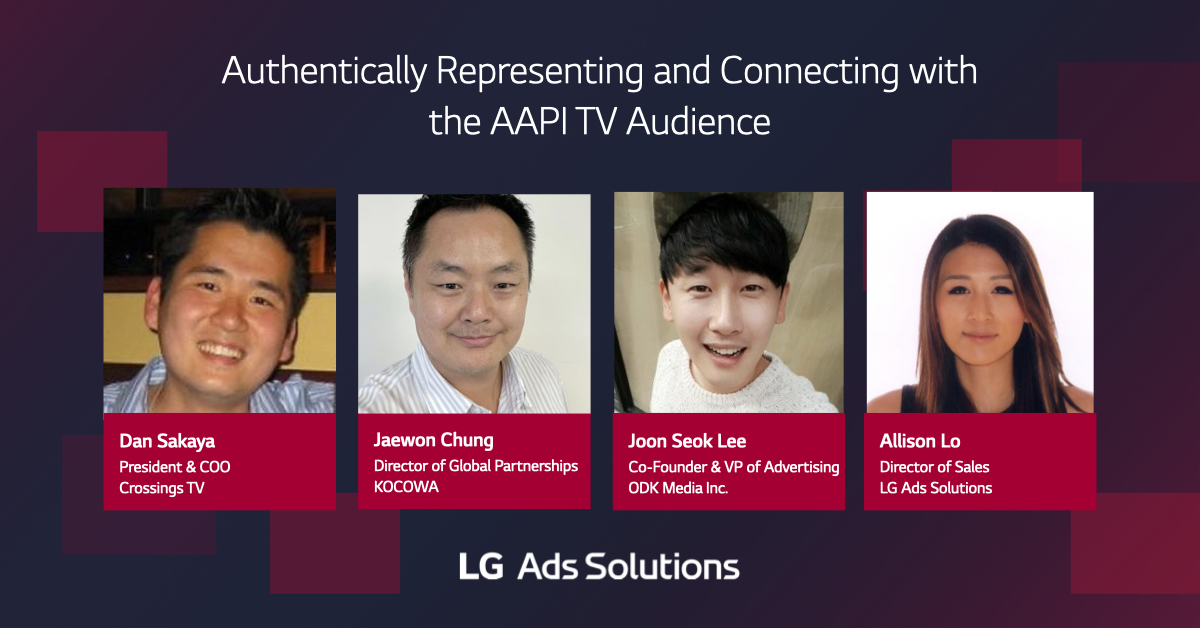
From the Experts: 3 Key Ways to Connect with Asian American TV Audiences
Connected TV Trends, Linear TV, TV Advertising News, TV Audience Analysis, TV Measurement, TV Technology
Linear and Streaming TV: Arch Enemies or Dynamic Duo?
Connected TV Trends, Linear TV, TV Advertising News, TV Audience Analysis, TV Measurement, TV Technology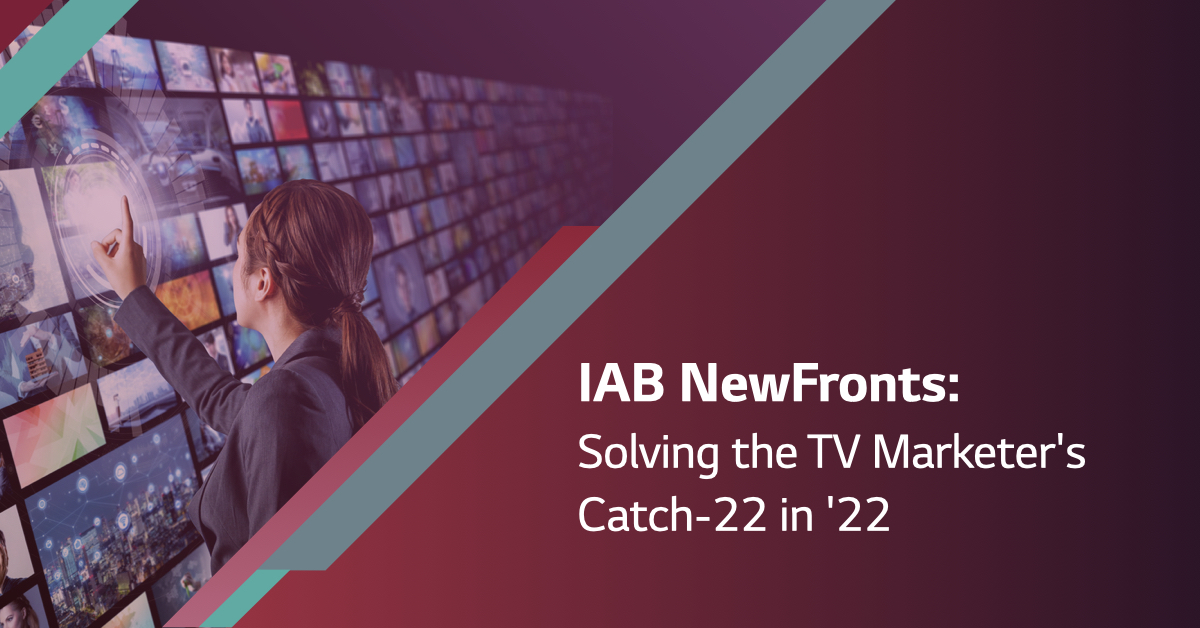
IAB NewFronts: Solving the TV Marketer’s Catch-22 in ’22
Connected TV Trends, Linear TV, TV Advertising News, TV Audience Analysis, TV Measurement, TV Technology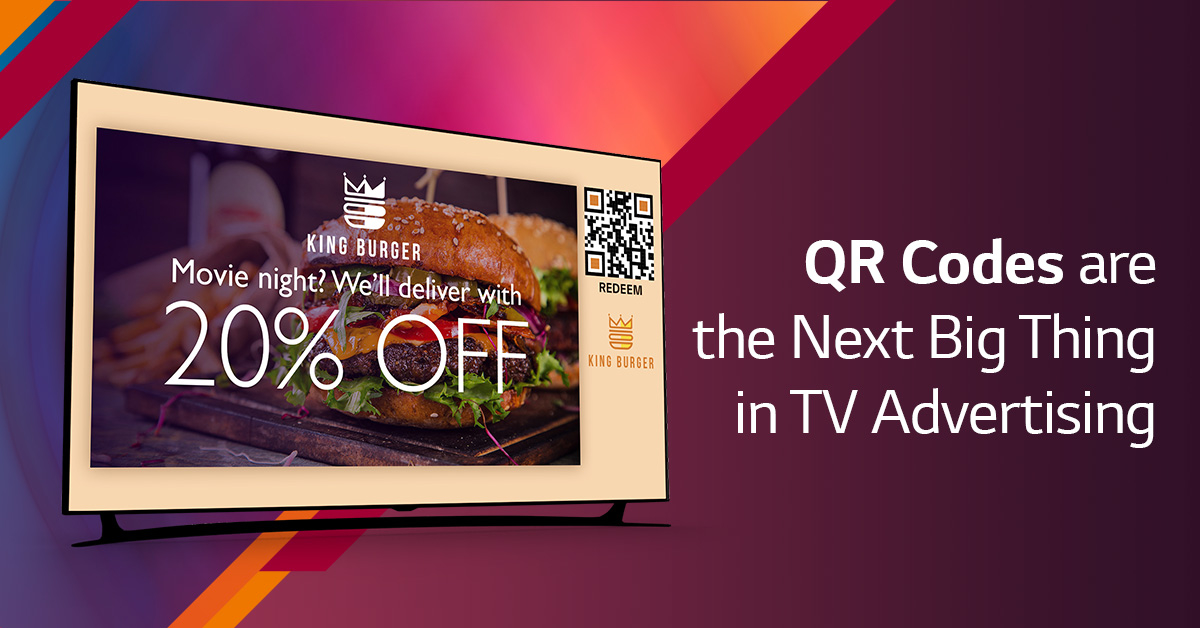
Scan To Buy: QR Codes Are Revolutionizing The Advertising Industry
Connected TV Trends, Linear TV, TV Advertising News, TV Audience Analysis, TV Measurement, TV Technology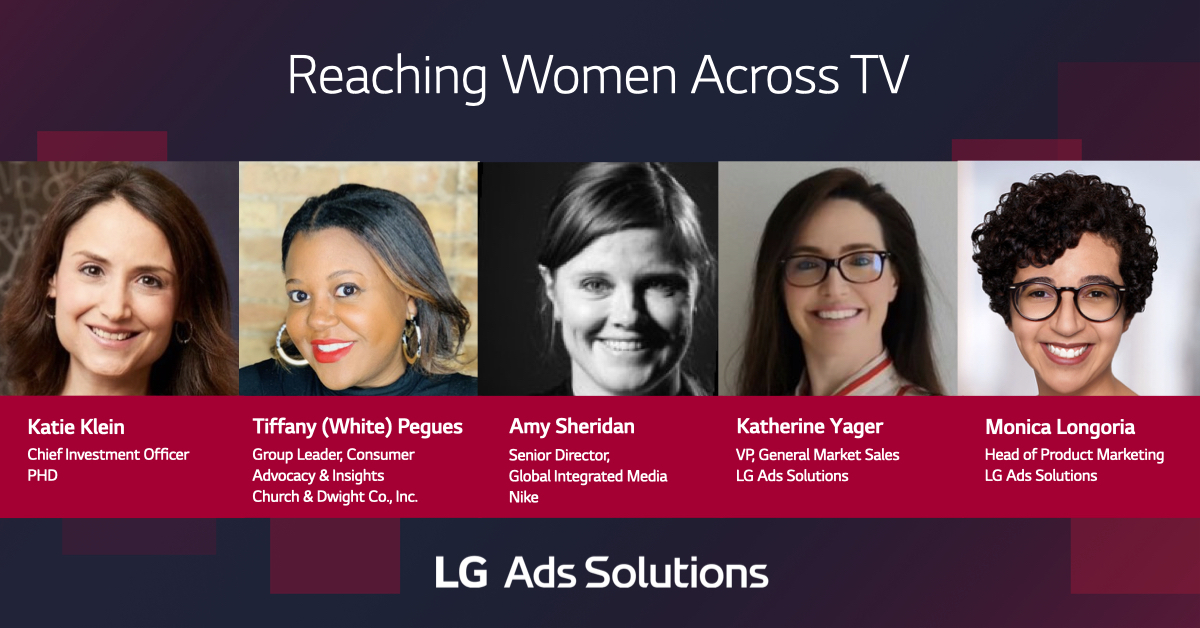
From The Experts: 3 Tips To Reach And Connect With Women Audiences
Connected TV Trends, Linear TV, TV Advertising News, TV Audience Analysis, TV Measurement, TV Technology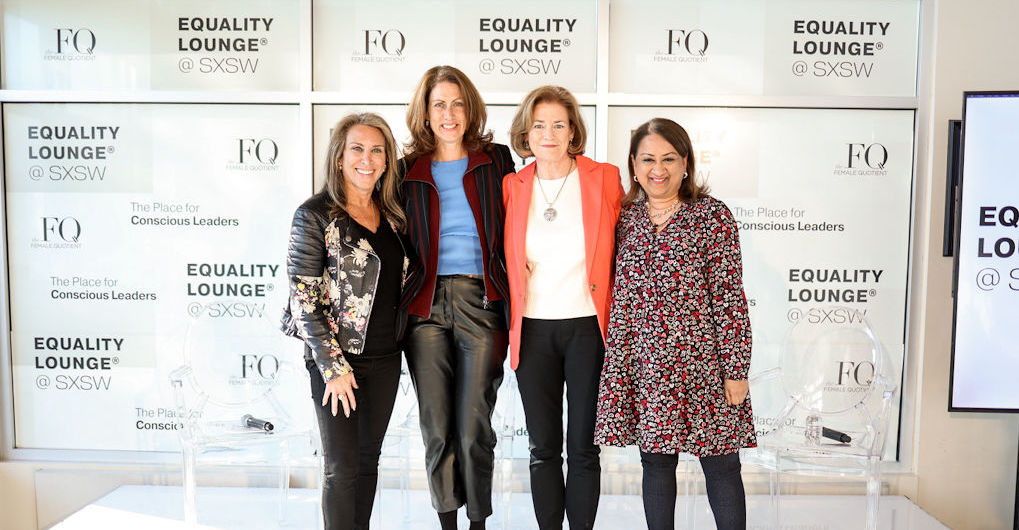
Breaking The Bias: Why Brands Must Intentionally and Accurately Represent Women in Messaging
Connected TV Trends, Entertainment, Linear TV, TV Advertising News, TV Audience Analysis, TV Measurement, TV Technology
Three Neat Things To Know While Serving Ads To Alcoholic Beverage Audiences
Connected TV Trends, Entertainment, Linear TV, TV Advertising News, TV Audience Analysis, TV Measurement, TV Technology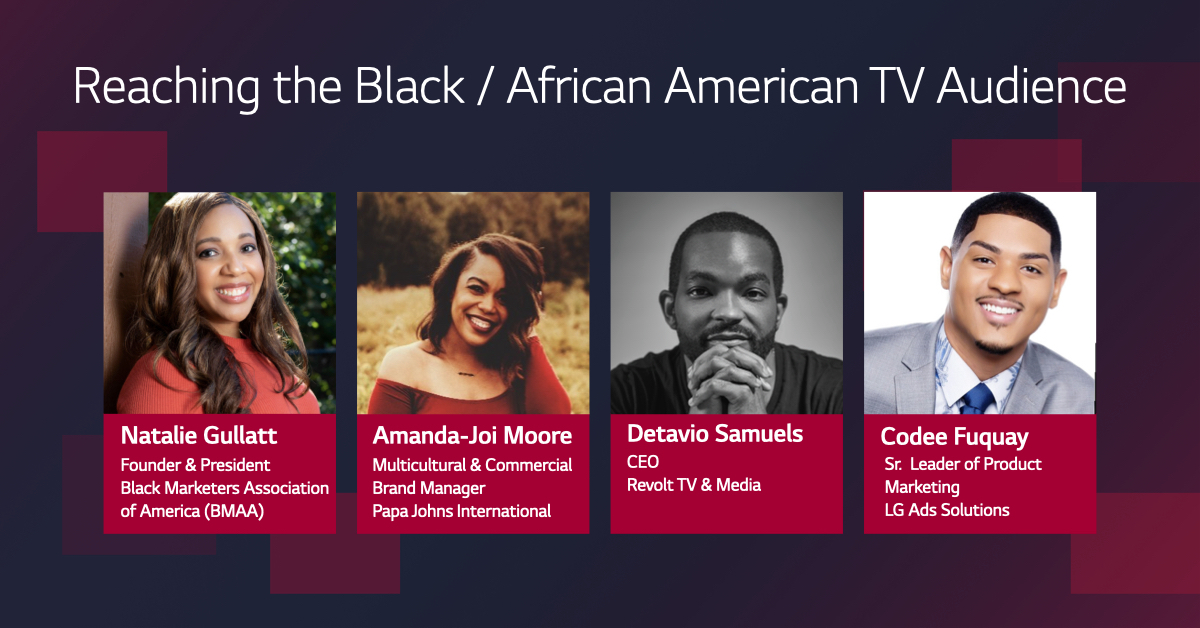
From The Experts: Authentically Engaging With Black / African American Audiences
Connected TV Trends, Entertainment, Linear TV, TV Advertising News, TV Audience Analysis, TV Measurement, TV Technology
How ACR solves major advertiser challenges: Transparency, Cross-Platform Advertising, Measurement, Incrementality
Connected TV Trends, Entertainment, Linear TV, TV Advertising News, TV Audience Analysis, TV Measurement, TV Technology
New Year, New Ad Units on LG TVs
Connected TV Trends, Entertainment, Linear TV, TV Advertising News, TV Audience Analysis, TV Measurement, TV Technology
How Guarantees Will Change Ad Buying in 2022
Connected TV Trends, Entertainment, Linear TV, TV Advertising News, TV Audience Analysis, TV Measurement, TV Technology
Four things to know to build a slam dunk ad strategy this March Madness
Connected TV Trends, Entertainment, Linear TV, TV Advertising News, TV Audience Analysis, TV Measurement, TV Technology
Three ways brands can go for gold during the 2022 Winter Olympics
Connected TV Trends, Entertainment, Linear TV, TV Advertising News, TV Audience Analysis, TV Measurement, TV Technology
LG Ad Solutions Names DeepIntent Exclusive DSP for Healthcare CTV Ads
Connected TV Trends, Entertainment, Linear TV, TV Advertising News, TV Audience Analysis, TV Measurement, TV Technology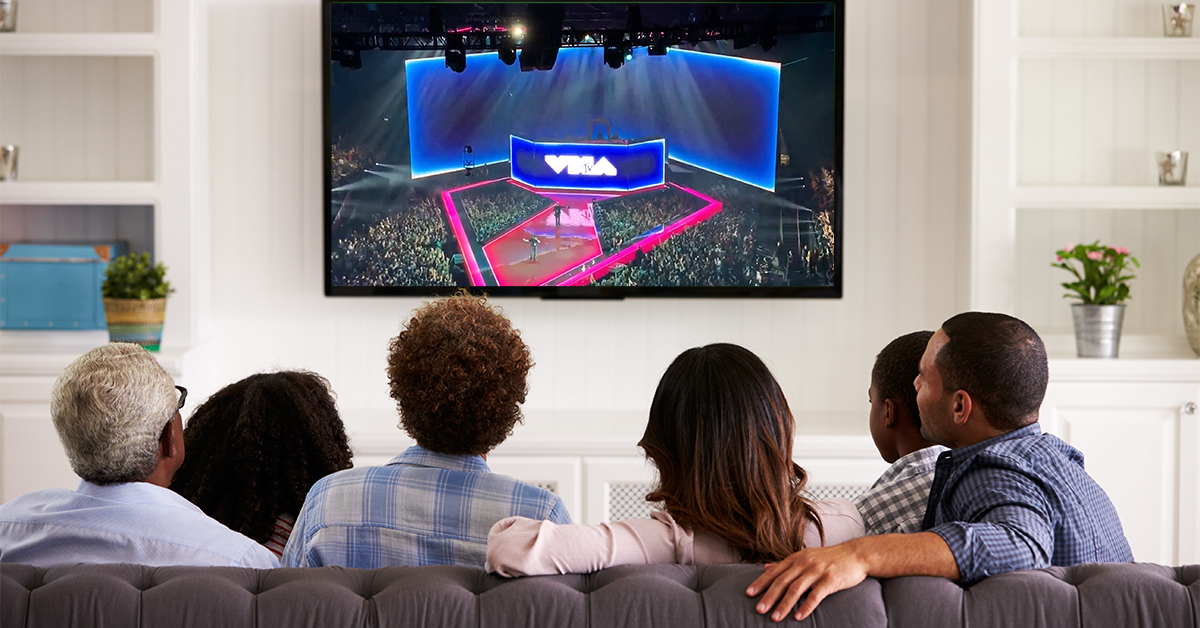
Hello, MTV – and welcome to our VMA Analysis
Connected TV Trends, Entertainment, Linear TV, TV Advertising News, TV Audience Analysis, TV Measurement, TV Technology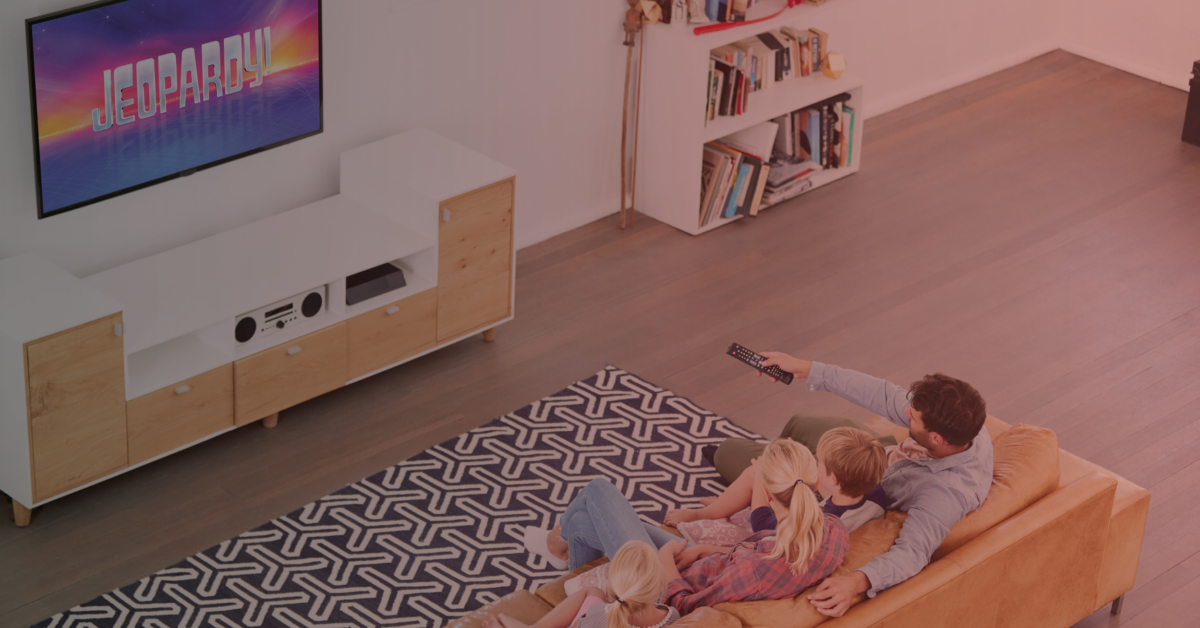 https://lgads.tv/wp-content/uploads/2021/08/LG-Ads-Jeopardy3.jpg
1308
2500
LG Ads Solutions
https://lgads.tv/wp-content/uploads/2022/11/lg-ad-solution-allblack-1.png
LG Ads Solutions2021-08-17 21:39:012023-03-06 10:16:33Is Mike Richards’ new job in Jeopardy?
https://lgads.tv/wp-content/uploads/2021/08/LG-Ads-Jeopardy3.jpg
1308
2500
LG Ads Solutions
https://lgads.tv/wp-content/uploads/2022/11/lg-ad-solution-allblack-1.png
LG Ads Solutions2021-08-17 21:39:012023-03-06 10:16:33Is Mike Richards’ new job in Jeopardy?  https://lgads.tv/wp-content/uploads/2021/06/shark-week-1200x628-1.jpg
628
1200
LG Ads Solutions
https://lgads.tv/wp-content/uploads/2022/11/lg-ad-solution-allblack-1.png
LG Ads Solutions2021-07-22 20:18:442023-03-06 10:16:38New viewers swarm to networks as a result of Shark Week
https://lgads.tv/wp-content/uploads/2021/06/shark-week-1200x628-1.jpg
628
1200
LG Ads Solutions
https://lgads.tv/wp-content/uploads/2022/11/lg-ad-solution-allblack-1.png
LG Ads Solutions2021-07-22 20:18:442023-03-06 10:16:38New viewers swarm to networks as a result of Shark Week https://lgads.tv/wp-content/uploads/2021/06/25th-anniversary-1200x628-1.jpg
628
1200
LG Ads Solutions
https://lgads.tv/wp-content/uploads/2022/11/lg-ad-solution-allblack-1.png
LG Ads Solutions2021-07-16 18:49:562023-03-06 10:16:43MSNBC tune-in is up as we settle into the Biden reign
https://lgads.tv/wp-content/uploads/2021/06/25th-anniversary-1200x628-1.jpg
628
1200
LG Ads Solutions
https://lgads.tv/wp-content/uploads/2022/11/lg-ad-solution-allblack-1.png
LG Ads Solutions2021-07-16 18:49:562023-03-06 10:16:43MSNBC tune-in is up as we settle into the Biden reign https://lgads.tv/wp-content/uploads/2021/06/keeping-up-kardashians-1200x628-1.jpg
628
1200
LG Ads Solutions
https://lgads.tv/wp-content/uploads/2022/11/lg-ad-solution-allblack-1.png
LG Ads Solutions2021-06-22 21:01:322023-03-06 10:16:48Can E! keep up without the Kardashians?
https://lgads.tv/wp-content/uploads/2021/06/keeping-up-kardashians-1200x628-1.jpg
628
1200
LG Ads Solutions
https://lgads.tv/wp-content/uploads/2022/11/lg-ad-solution-allblack-1.png
LG Ads Solutions2021-06-22 21:01:322023-03-06 10:16:48Can E! keep up without the Kardashians?
The Sudden TV Revolution
Connected TV Trends, Linear TV, TV Advertising News, TV Audience Analysis, TV Measurement, TV Technology
And the Oscar goes to…
Connected TV Trends, Entertainment, Linear TV, TV Audience Analysis, TV Measurement, TV TechnologyLG Ad Solutions is a global leader in connected TV and cross-screen advertising, helping brands find hard-to-get unduplicated reach at optimal frequency across the fragmented streaming TV landscape. We bring together LG’s years of experience in delivering world-class smart TVs to consumers worldwide, with big TV audience data and Video AI designed to connect brands with audiences across all screens. We are growing fast globally, and we are hiring!
